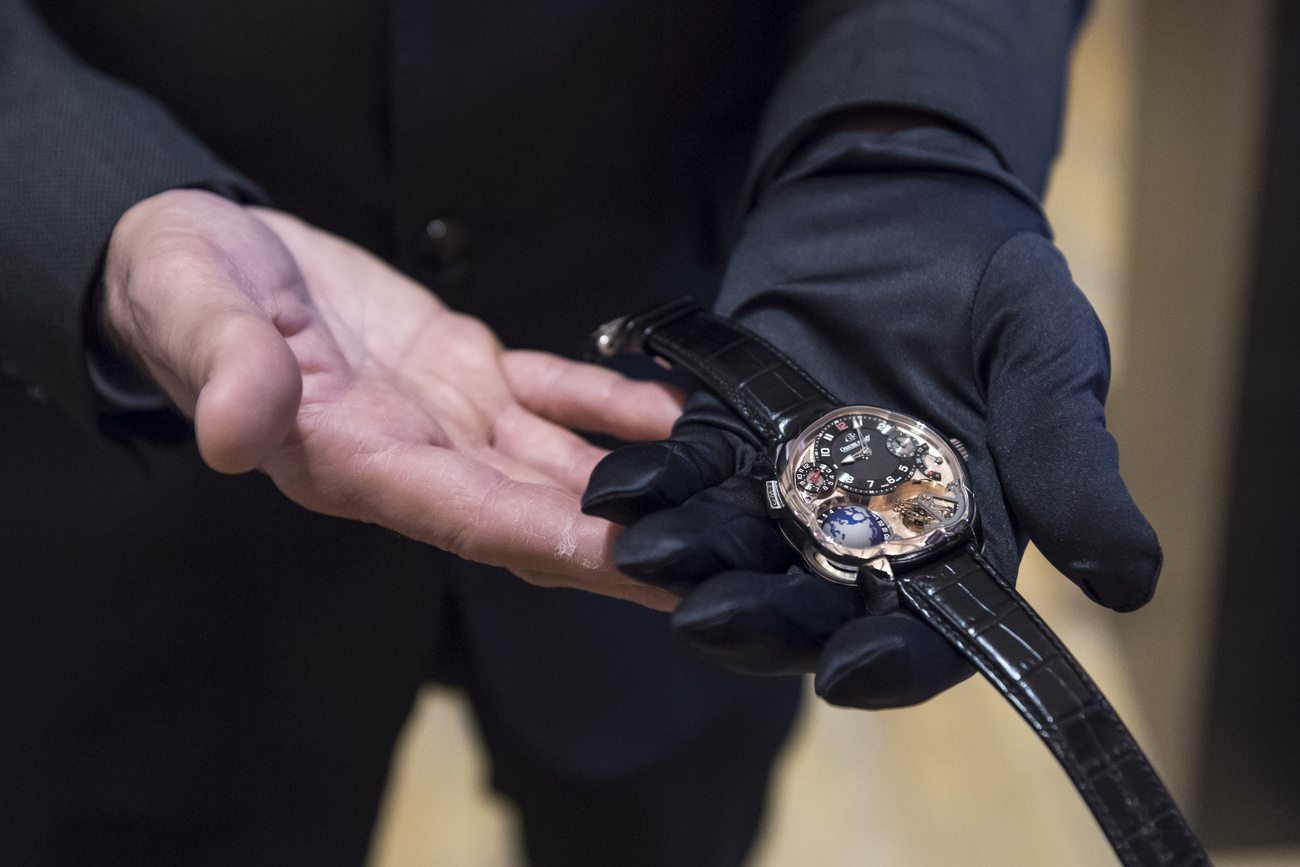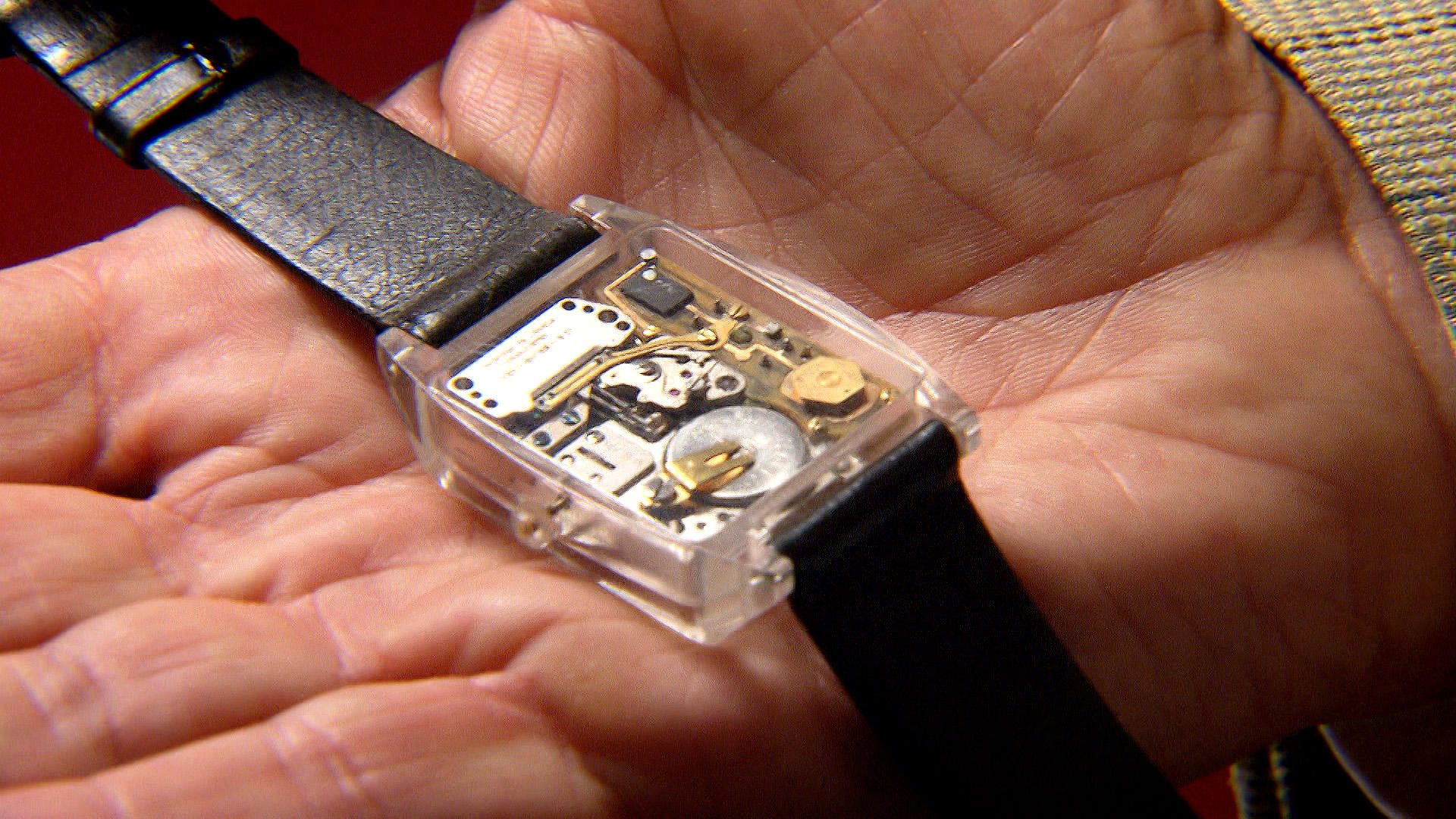Swiss watchmaking: where things stand

Heavily impacted by the coronavirus crisis, watchmaking nonetheless remains a symbol of Swiss know-how and “Made in Switzerland” precision manufacturing. Can it keep up its dominance in the luxury sector and compete against the likes of Apple? A primer on a key Swiss industry which exports its products all over the world.
Swiss-made products dominate international market
Switzerland produces just over 20 million watches per year, or just over 2% of global timepiece manufacturing. However, it commands more than a 50% share of the global watch industry in value terms, with turnover for all Swiss brands combined estimated at more than CHF50 billion ($53 billion) in retail sales value.
In the high- and mid-range segments, Switzerland leaves just a few crumbs for its French or German competitors: more than 95% of watches sold for CHF1,000 or more are produced by Swiss companies.
In recent years, the average value of exported Swiss watches has continued to climb, reaching around $1,000. Multiply that number by two or three and you have an idea of the average price payed by clients who wear those watches.
Surpassed by Apple
In contrast to the spectacular success of Swiss watchmakers in the luxury market, the drastic fall in the total number of watches manufactured is a trend that worries many industry specialists. In 2019, Swiss watchmakers exported almost 10 million fewer watches than they did in 2016. The impact of the coronavirus pandemic will see sales decline to just 14 million watches in 2020. Such dismal figures take the industry back to volume sales equivalent to those of the 1940s.
Aside from competitive difficulties, the watchmaking industry is facing significant structural challenges. The first amongst them is competition from smartwatches —notably the Apple Watch — which has delivered a heavy blow to “Swiss Made” watches in the entry-level segment (under CHF200). Apple alone sold more watches in 2019 than the entire Swiss watch industry, although the company only began selling watches five years ago.
The celebrated Swatch brand has been the hardest hit by the downturn in volume, with estimates by Swiss public broadcaster RTS suggesting that the brand today produces between three and seven million watches annually, compared to some 15 to 20 million produced during its heyday in the 1990s. Together with entry-level brands such as Mondain, Festina, Victorinox or even Raymond Weil, Swatch has also been hit by the introduction in 2017 of tough new rules governing the attribution of the “Swiss Made” label. The new rules forced the brands to use more components made by Swiss suppliers which in turn forced them to increase prices, with the result that sales volumes declined by several hundreds of thousands of units.
Most well-known and most secretive
“If, by the age of 50 one does not own a Rolex, one has failed at life,” goes the celebrated quote uttered by French advertiser Jacques Séguéla more than a decade ago and which still serves to illustrate the outsized symbolic dimension the Rolex brand occupies within the luxury universe. Rolex timepieces adorn the wrists of personalities from Roger Federer to Brad Pitt, Donald Trump or Jay-Z. It is also the best-selling Swiss watch brand with an estimated turnover last year of more than CHF5 billion.
At least, that is the figure estimated by the American bank Morgan Stanley and Swiss consultants LuxeConsult. Because while Rolex has developed an unparalleled notoriety across the globe, it also operates its business with total discretion. Privately owned by the Hans Wilsdorf Foundation (founder of the brand) Rolex is not listed on the stock exchange and its securities are not negotiable. It is an arrangement that enables the Geneva-based brand to control its communications in the manner it sees fit, outside of transparency rules imposed by stock markets.
Exclusive club of billionaire brands
There are some 350 watch brands which bear the “Swiss Made” label but they are far from all operating in the same league. The top five most powerful brands together account for a 50% share of watch sales. Behind the untouchable Rolex are Omega (Swatch Group, CHF2.34 billion per year), Longines (Swatch Group, CHF1.65 billion), Cartier (Richemont, CHF1.59 billion) and Patek Phillippe (CHF1.35 billion). The exclusive club of billionaires is completed by Tissot (Swatch Group, CHF1.05 billion) and Audemars Piguet (CHF1.03 billion).
Alongside the successful independent brands — Rolex, Patek Philippe, Audemars Piguet and Richard Mille — three companies dominate the Swiss watchmaking market:
- Swatch Group, global leader in the watch sector, listed on the Swiss stock exchange and controlled by the Hayek family which owns about 40% of the capital.
- Richemont, founded by South African Johann Rupert, listed on the Swiss and South African stock exchanges.
- LVMH, global leader in luxury goods, managed by France’s Bernard Arnault, listed on the Paris stock exchange.
Modest impact on Swiss economy
Watchmaking accounts for around 1.5% of Swiss gross domestic product (GDP). It is the country’s third-largest export industry behind the pharmaceuticals and machine tools sectors. Its companies are mainly located in Neuchâtel, Bern, Geneva, Solothurn, the Jura and Vaud cantons where the industry generates more than 90% of the sector’s added value.
The watchmaking industry is a major generator of jobs in these regions, with the 700 companies active in the industry employing nearly 60,000 people. When indirect employment linked to the sector is added, it is estimated that nearly 100,000 Swiss jobs are dependent on the watchmaking industry.
But the salaries earned by the industry’s employees are much more modest than the value of the timepieces they work to produce. In 2018, the average salary in the watchmaking industry was just over CHF5,400 per month; that’s CHF1,000 less than the average salary of the country’s workers.
Glorious and dark periods
The watch sector peaked at the end of the 1960s, when it counted almost 90,000 employees in 1,500 companies. In the early 1970s, however, the arrival of Asian-made quartz watches disrupted the market and sent the Swiss watchmaking industry into a profound crisis. By the mid-1980s, just 30,000 employees in around 500 to 600 businesses had survived the crisis.

More
Ticking for 50 years: The quartz watch
Switzerland’s watchmaking industry was revived by the production of mass-market models, especially by Swatch watches. Beginning in the 2000s, this was followed by exponential interest from emerging markets in luxury models. As a result, by 2019, Swiss watchmaking generated more than CHF21 billion annually in exports.
The coronavirus pandemic has nonetheless delivered a brutal blow to the smooth operation of the industry. The Federation of the Swiss Watch Industry (FH) estimates exports will decline by 25% to 30% in 2020, making it worst economic crisis in the sector’s history.

More
Covid-19 brings Swiss watchmaking to a standstill
Foreign workers in the industry
The Epinal image of the Jurassian watchmaker bent over his workbench with a magnifying glass is still widely used in publicity materials by the industry. The reality, however, is much less bucolic. Since the 1960s the Swiss watchmaking industry has enlisted cheaper foreign workers to power its factories. At that time, workers were often Italian women recruited to undertake the repetitive actions of the assembly lines.
Today, many cross-border workers from France are employed in watchmaking factories located in western Switzerland’s Jura Arc, the historic cradle of the sector. In this region, they account on average for one in three employees, a proportion which can reach more than 80% in factories situated close to the French or Italian borders.
Historically, Switzerland’s watchmaking industry owes its very existence to foreigners, thanks to the French Huguenots (Protestants) who fled their country in the wake of the Revocation of the Edict of Nantes by Louis XIV in 1685.
China: Eldorado for Swiss watchmakers
During the 2000s, the progressive opening of the Chinese market provided a massive boost to Swiss watch exports to the Far East. Since then, the value of watch exports to China has been multiplied by a factor of 100. When shopping tourism is included, it is estimated that approximately one in two “Swiss Made” luxury watches is purchased by a Chinese customer.
But China’s economic slowdown, the anti-corruption campaign instigated by Xi Jinping — watches are greatly appreciated gifts amongst the regime’s officials — and the political crisis in Hong Kong have put an end to the honeymoon period between Swiss watchmakers and China.

In compliance with the JTI standards
More: SWI swissinfo.ch certified by the Journalism Trust Initiative














You can find an overview of ongoing debates with our journalists here . Please join us!
If you want to start a conversation about a topic raised in this article or want to report factual errors, email us at english@swissinfo.ch.